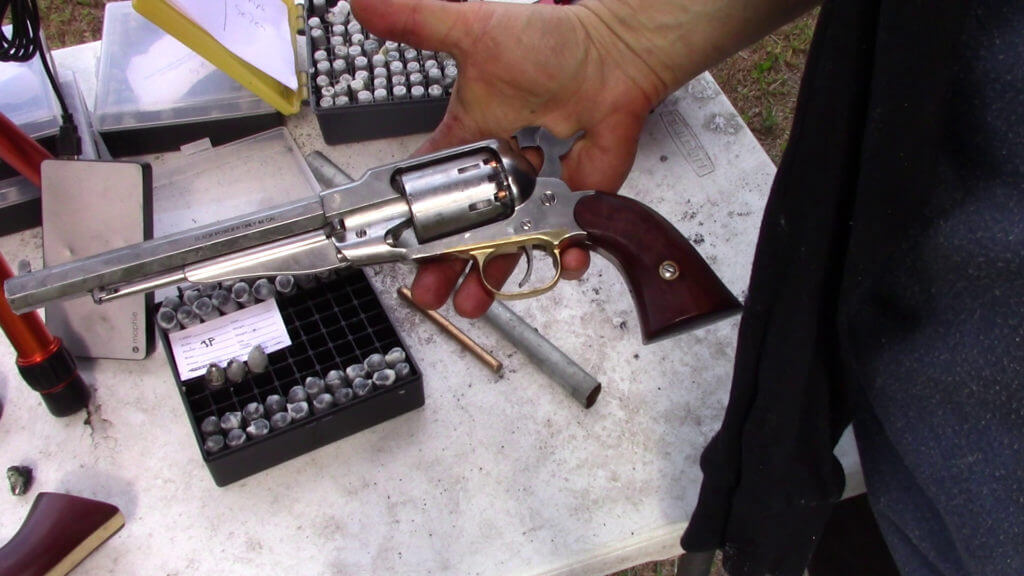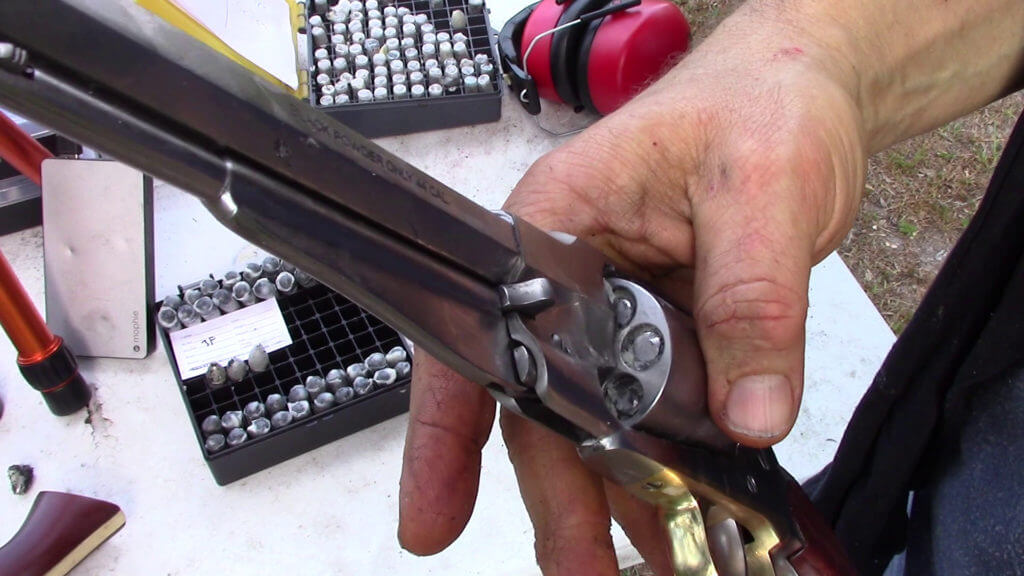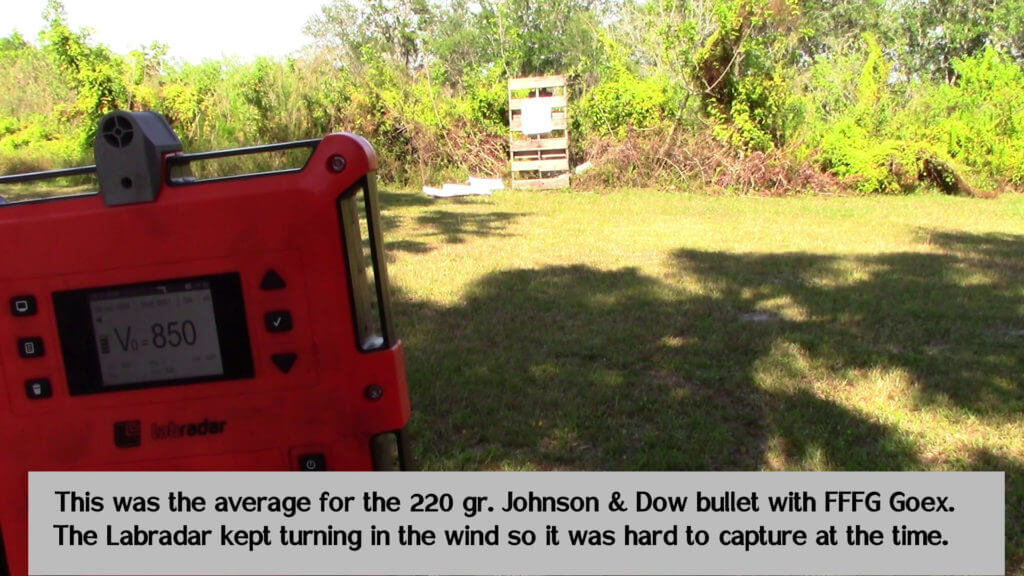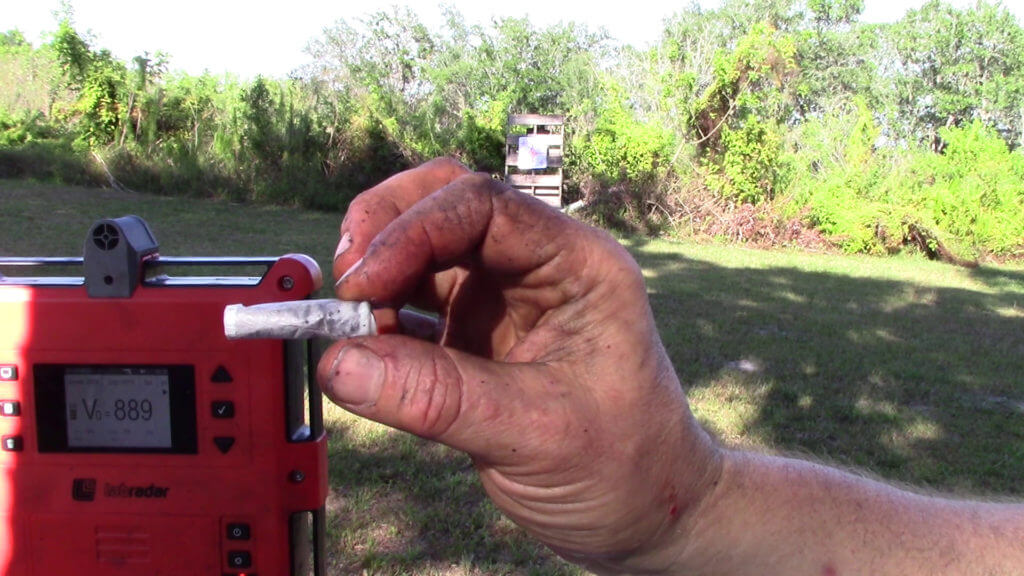
It is one thing to look at black powder firearms through the eyes of history, but it is entirely another to look at them as valid self defense weapons that require no FFL transfer.
My approach has always been the latter. Black powder pistols are nothing to be trifled with, and they meet or exceed many common pistol calibers when it comes to actual muzzle kinetic energy.
The problem is, as nearly always is the case these days, INTERNET MISINFORMATION. Bootlicking safety nannies share their dumbass advice far too easily online, and it is nothing short of incorrect and stupid. When you copy Civil War loads, regrettably you end up with little more than lame mouse farts. It doesn’t have to be that way.
So to start, I am not giving you loading advice for these guns. I am merely sharing my experience, and I will explain that my experience I feel reflects the reality of these guns. Metallurgy has come a long way since 1858. I do not feel that the cylinders of any modern cap and ball revolver will be ill affected by any black powder or BP substitute that fills up the cylinder. Therefore I fill them as close to the top as possible.
I never ever ever ever ever do anything like what are called “duplex” loads of a small amount of smokeless powder covered with black powder. And any nanny story you hear of a guy they saw at the range blow his gun up most likely involved something like that.
As I showed in my article and video on the paper cartridge former kit at cartridgekits.com, my approach is to figure out a load that under full compression raises the bullet to the top of the chamber mouth.

For this first article, I figured that I would start with the most common BP revolver caliber, 44, and the most easy to use BP revolver, the 1858 Remington New Model Army. The original Remmie has a long 8″ barrel, slightly longer than the Colts, and this gives you a hair more velocity, because more powder gets to burn inside the barrel before the bullet leaves. At some point I will compare the different length barrels and how they increase and decrease velocity. For this one, we stick with the original length.
Calculating Ballistics
Now I need to stop a bit and explain ballistic calculations, for those who are new to all of this stuff.
We measure the speed of a bullet generally in “feet per second” using a device known as a chronograph. These days you can get a cheap chrono on Amazon or AliExpress that works just as well as the name brand ones. The standard machine clocks the shadow of the bullet as it passes over sensors, and they may or may not need things called skyscreens to diffuse the sunlight.
I absolutely loath standard chronographs, so I invested in the orange contraption you see in the videos. It is call a Labradar, and it goes for north of $500. Theoretically the Labradar is the ultimate chrono, but the execution is so poor that I cannot recommend it. I have successfully resisted smashing it to pieces, so at some point I will most liklely make a video of the quirks I have had to overcome with its pisspoor engineering and usability.
Bullets we measure in “grains.” There are 7,000 grains in a pound, so it is a small measurement that makes it easy to delineate between bullets of similar design.
We measure energy for firearms in “foot pounds,” and there are lots of online calculators (like this one and this one) to easily figure out a comparative foot pounds for the different rounds that we shoot.
The only caveat is in the calculation, you square the velocity, so a lighter faster bullet tends to reflect a disproportionately high number. The actual stopping power of a round or a bullet or a cartridge or a BP revolver is outside of the purview of what I am covering here right now. Foot pounds gives us an apples to apples with popular cartridges using a similar bullet weight.
The formula used by most online calculators is to multiply the weight of the bullet (in grains) the velocity (in feet per second), squared (times itself), then multiply that times 0.000002218.
Ballistics of the Johnson & Dow Bullet
I wanted to start this first of my ballistics articles with the most common conical out there. It is the Eras Gone Bullets cast bullet that replicates the Civil War Johnson & Dow design. It drops at about 220 grains out of pure lead, or lead with a tiny bit of tin as I’ve explained in my recent article on casting.
With FFFG Goex black powder, This bullet travels at about 850 feet per second with a mostly full cylinder. This equates to about 30 grains. Technically you can get a little more, but that is as far as my experimentation has gone with my guns, using the dipper for the 44 paper cartirdge at cartridgekits.com. As I explained in my video before, that’s about the measure of the dipper when you can just see the edges of it, and it is not overflowed at all.

If you were making cartridges for the most accurate loads, you would weigh your charges to match. Historically black powder is measured in volumetric grains, and there is much more room for inconsistency there, but there is no rule that you can’t weigh black powder. Usually your most accurate load is going to mouse fart. These are self defense loads.
850 feet per second equates to 353 foot pounds of kinetic energy. The closest easy comparison to that number is the venerable 45ACP. The classic bullet is a 230 grain round nose jacket bullet, and the standard velocity is generally the same, at 850 feet per second. That equates to 369 foot pounds of energy.
When you switch the powder to Hodgdon Triple Se7en, using the same volumetric measurement, the velocity jumps to 900 to 950 feet per second. At 950, the same bullet jumps to 441 foot pounds, which is comparable to the nastiest of the same bullet in a .45ACP +P.
Ballistics of Roundballs
By far most people shoot roundballs more than anything else in these guns, and I had some full snot roundball cartridges with me, so I decided to add them on. The only powder I had was FFFG Goex, so understand that Triple Se7en would be even more brutal based on the tests with the J&D bullet.

My average with a .454 roundball, which weighs about 145 grains, was just over 1,000 feet per second, so for calculations I’ll use the flat thousand. The equates to 322 foot pounds.
Compare that to the .38 Special, which was carried by our entire nation’s law enforcement for at least two generations.
The most snotty +P .38 Special in a 4″ barreled revolver is a light bullet, 125 grains, at 1050 feet per second. That equals 306 foot pounds.
There are also some good correlations in the 9mm data. There is a 147 grain bullet at 1,000 fps, yielding 326 foot pounds.
Trade in that Glock Dammit!
Now I’m not going to tell you that a Civil War era cap and ball revolver is as an effective weapon as a modern hi cap semi auto, or even a Ruger Security Six. The guns tend to break unexpectedly, caps can get caught in the action, bullets can shift forward and catch on the cylinder, and in general you will experience at least one problem every time you take them out to shoot.
Some of those issues I will teach you to mitigate as this Black Powder Project progresses. And certainly the paper cartridge system makes things head and shoulders easier, quicker and more consistent. But this is 19th century technology and should be thought of and treated as nothing but.
My intention is to share with you the extremely effective ballistics of these NO FFL guns. Unless things radically change, this is the end of the Republic we are facing. And you can bet that this will result in an end to the 2nd Amendment. The 1st is already long gone.